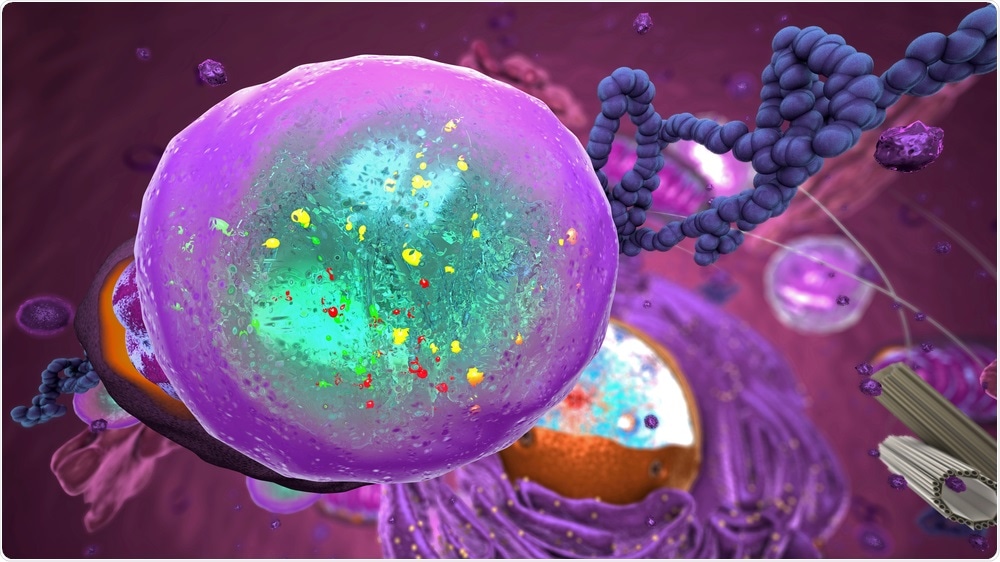For the first time, researchers headed by Professors Wei Xiong and Chunlei Cang from the University of Science and Technology of China of the Chinese Academy of Sciences have achieved lysosome typing based on single lysosome metabonomic data.

Eukaryote cell with lysosomes. Image Credit: Christopher Burgstedt/Shutterstock.com
They achieved this feat by determining a solo lysosome metabonomic mass spectrometry detection technology and investigated the heterogeneity changes of lysosome metabonomics in the cellular senescence process.
Lysosomes are essentially organelles found in nearly all eukaryotic cells. They are crucial for maintaining signal transduction, energy, and metabolic homeostasis, and for the recovery of impaired organelles and proteins. Earlier studies had indicated that lysosomes and their internal metabolic processes are closely related to cellular senescence.
Different kinds of lysosomes, like endolysosome and autophagy-lysosome, exist in a single cell. Analyzing the specificity of a variety of lysosomes in the aging process can lead to new strategies for developing drug targets for anti-aging and for treating diseases related to aging.
However, technical limitations make it impossible to detect single lysosome metabonomics, let alone analyze cell aging from the standpoint of single lysosome metabonomics.
In this study, the team established the single lysosomal mass spectrometry platform built on ultra-low speed induction electrospray ionization mass spectrometry and a single lysosome patch. Through this platform, metabolites were directly detected without any pretreatment in cells and the information of metabolites in lysosomes was also retained more accurately.
The researchers subsequently performed a detailed study on the metabolic heterogeneity of different types of lysosomes in the cell aging process on the platform.
On the basis of the single lysosome metabonomics, lysosomes from a minimum of four cell sources were split into five subgroups, including autophagic lysosomes and endocytic lysosomes. The metabolic changes of different lysosomes in the process of aging were analyzed.
The metabolic changes of the five lysosomal subsets in the aging process were also analyzed, which revealed that the metabonomics changes of each type of lysosomal subsets were actually different.
This research work indicates that during the cell aging process, lysosome-type specificity occurs in the lysosome metabolic changes.
Source:
Journal reference:
Zhu, H., et al. (2021) Metabolomic profiling of single enlarged lysosomes. Nature Methods. doi.org/10.1038/s41592-021-01182-8.